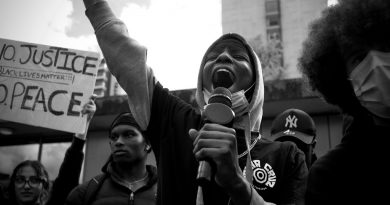Social Inclusion in Nepal: Strengths and Weaknesses
Here we are dealing with Social Inclusion in Nepal, Positive aspects of social inclusion in Nepal as well as some weaknesses of social inclusion in Nepal
Social Inclusion in Nepal
Social Inclusion is a process of ensuring the equal participation of marginalized people of different gender, caste, religion, ethnicity, language, etc. in the mainstream of society by providing them with justifiable power, resources, and opportunities. It is a multi-dimensional subject that deals with the protection of human rights by empowering and uplifting the participation of backward people in different sectors of rural development.
The history of social inclusion in Nepal is not so long, however, we have made varieties of provisions regarding the social inclusion in our current constitution of Nepal making its nickname, “an Inclusive Constitution”. Thus, in my view, we have jumped to the era of participation from the era of marginalization. All thanks to the theory of social inclusion due to which we have now been able to raise the voice of backward and disabled people to the level of policymaking and have increased their effective participation in the policy implementation, monitoring and evaluation as well as in the distribution of benefits.
As an eye-witness of the transformation of rural society from marginalized to inclusive, I have seen a series of its importance in the present context of Nepal. And I have directly observed its influences that have led to various positive changes in different aspects of our rural society.
Positive Aspects of Social Inclusion in Nepal
As mentioned above, the present constitution of Nepal is inclusive. It has ensured the participation of people of every group in governance, development and service delivery system. And it is the participation that has played an important role in raising the awareness among people and has developed the feeling of ownership towards the nation.
Just due to social inclusion people of different caste, religion, gender, language, region are being treated with equality and of course, with dignity as well. It has helped in the establishment of a stable and equitable society by gradually eradicating the deep rooted social malpractices and discrimination prevalent in our society.
These days, the backward, disabled and marginalized people are given special attention by the state. It has gradually uplifted the living standard of people. The means and resources of the stated has been distributed to all in a equi-justice manner. This has promoted the social justice.
We are living in a society full of diversity. The social inclusion has contributed in establishment of a conflictless society by strengthening social unity and indivisibility that has helped in the protection and promotion of our cultural and historical properties as well.
And it has reflected the real democracy through public welfare and social justice.

Inclusion itself is never a bad concept. The way we practice and implement it matters in its effectiveness. Despite all the above positivities, I have encountered some of the weaknesses of social inclusion that we are facing in our societies.
Weaknesses regarding Social Inclusion in Nepal
For the effective implementation of social inclusion, the marginalized group should be defined and identified at first. There should be the scientific basis for the identification regardless of caste, ethnic groups, region and religion. While identifying the marginalized group, special care should be given to the political, social and economic status of people. But, the practice of social inclusion without any studies and researches just for the fulfillment of self-interest has become the severe weakness in Nepal.
We have understood inclusion only as a quota system or reservation because we have been practicing these from the past. As inclusion is a multidimensional subject, we need to increase our efforts to empower the people.
An Elite Capturing is still prevalent in our society either it may be in economic sector or in social sector. Talking about social inclusion, an elite group of marginalized people have grabbed the opportunity and the real marginalized always have become empty-handed.
In the present context, these problems have been the hindrances to the aim of social inclusion. To solve these problems, governmental institutions should be actively engaged in fair and effective policymaking and strict implementation. The people should be provided with awareness about it. And I strongly recommend for “Short Term Reservation and Long Term Empowerment”.
Conclusion
To sum up, my view about social inclusion goes no beyond its principles. It has been the greatest boon for the people of rural Nepal who were neglected by the governance system and were compelled to live in a society full of discrimination, disparity, and disability in the past. But these days, due to social inclusion, VCR (Voices, Choices, Rights) of people have been ensured. Equality is being maintained in society through the equity that has ultimately promoted social justice in Nepal as per the sentiment of our constitution.
Thus, in the present context of Nepal, I think social inclusion is a must for balanced rural development. It is only the social inclusion that has driven our society to this level. Let’s not limit social inclusion to this. We have a long journey of development ahead, as prescribed by the Sustainable Development Goals and we could reach our destination only by overcoming the above-mentioned weaknesses of social inclusion.
Thank You !! Please leave your valuable feedbacks regarding this article.




